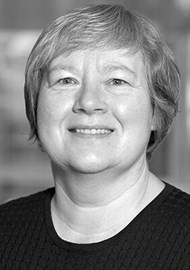Education and training have a key part to play in the development of leaders of the future; Dorte Hammershøi discusses the educational approaches taken in Denmark and the pros and cons of the methods used. Dorte also explains the BEAR project she leads and the personal motivation to drive such an innovative collaboration.
My view on education is strongly affected by my personal experience with the problem-based learning (PBL) model of Aalborg University as a student, teacher and scientist. The project-organised implementation translates very elegantly to the subsequent professional work life – especially in the field of engineering, where graduates solve problems through technical innovation in team-based work environments.
The unique qualities of the collaborative skillsets acquired in project-organised PBL programmes are, however, hard to formally credit the students with adequately, because excessive focus and separate grading would take attention away from the core substance of the educational programme.
In the general debate relating to pros and cons of different educational systems, it is a recurring discussion that some students shine in exams, while others do not and still make the more impressive careers. The public debate in Denmark has produced a very unflattering term, ‘12-tals piger’ (girls that get straight As) to describe the former of these two student groups. It is implied that getting all As is not enough, as there are more dimensions than what we can adequately assess in exams. It is also implied that female students primarily excel in exams. This gender discrimination cannot help but trigger a few personal flags, and my experience with young highly-intelligent women embracing this as a fixed truth has forced me to reflect more thoroughly on it. The debate itself programmes a certain understanding into our youth, and the gender bias may affect the careers of women and men in academia, entrepreneurship, and more.
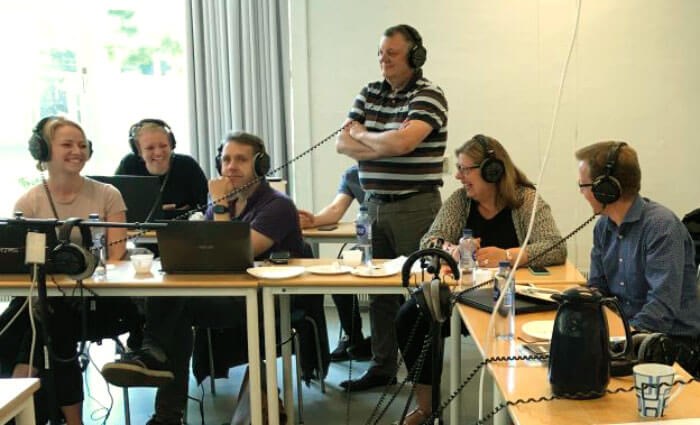
The BEAR project team listens to some of the new hearing tests during a project meeting. From, L-R: PhD students, Sabina Storbjerg Houmøller (Odense University Hospital) and Anne Wolff (Aalborg University Hospital); Dr med Jesper Hvass Schmidt (Odense University Hospital, University of Southern Denmark, and OPEN); Senior Scientist at Force, Gert Ravn; GM at Oticon, Karen Wibling Solgaard; and Head of Audiology, at Oticon, Thomas Behrens.
Dweck’s theories of intelligence offer some suggestions on why we may have different perceptions of our own ability to learn and to which extent our intelligence is malleable [1]. Individuals with a fixed mindset fear challenges, mistakes and critical feedback, whereas individuals with a growth mindset thrive under the same circumstances. These studies also shed light on how we programme this into the mindset of children and adolescents, and how this may be accounted for to enable learning that is more successful. The group-organised problem-based framework, which feeds on challenge, iterations on solutions, and critical feedback (from peers, potential users and stakeholders) is, in my opinion, an example of a learning environment that supports the development of a growth mindset.
Turning to the environment where we fit hearing aids to the patients in Denmark, training of the hearing care professional is primarily based on practice through internships. This model makes full appreciation of the existence and use of tacit knowledge in the patient encounter, which can only be learned by working in the professional environment where the tacit knowledge exists. The main hazard of this is that tacit knowledge is – tacit! You may also adopt the unfavourable exemplars of practice where formalised learning objectives are absent. The patients that have hearing aids fitted have equally different mindsets, life conditions etc. as other individuals and it is possible that the encounter with the professional could be programmed more favourably towards growth. The constant efforts to identify any such tacit knowledge and formalise it in the most meaningful way is one of the existing challenges in many clinical environments.
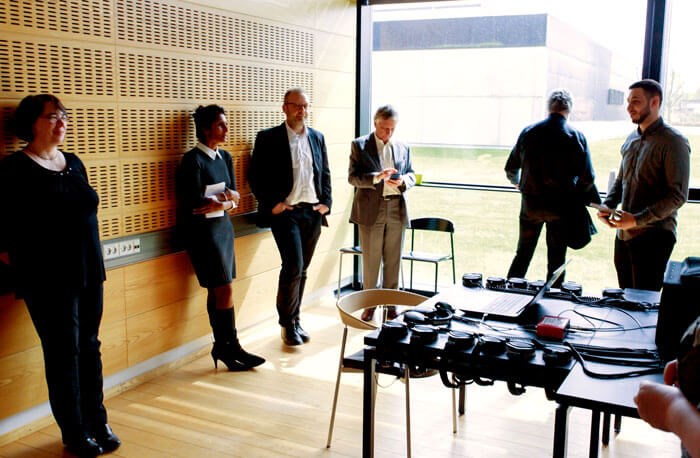
Suggestions for new hearing tests are demonstrated for the BEAR Advisory Panel at the Annual Review in 2018 at the University of Southern Denmark. From L-R: Prof Inga Holube; Dr Priya Carling; Project Officer, Peter Aadal Nielsen; Prof Norbert Dillier; Prof Mark Laureyns; and research assistant, Mouhamad-El-Haj-Ali.
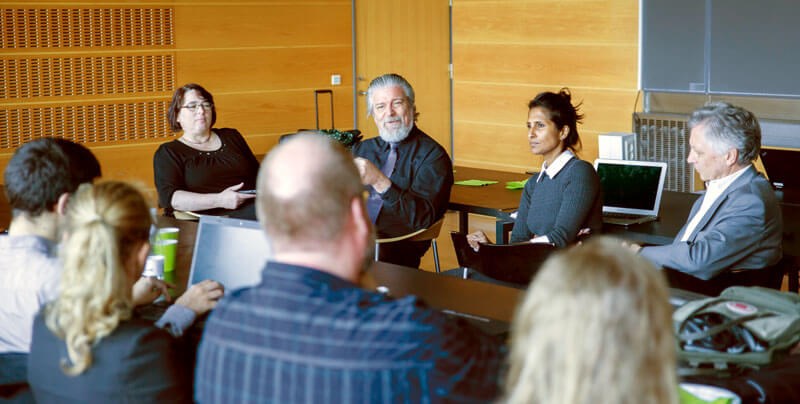
Discussions with the BEAR Advisory Panel at the Annual Review in 2018 at the University of Southern Denmark. Facing forward from L-R: Prof Inga Holube; Prof Mark Laureyns; Dr Priya Carling; and Prof Norbert Dillier.
The BEAR project (Better hEAring Rehabilitation) is a Danish research collaboration (funded by Innovation Fund Denmark, and project partners), which tries to replace the typical trial-and-error process with an evidence-based framework for fitting and for aided-performance evaluation in follow-ups. The project encompasses the possibility for an auditory profiling beyond the individual audiogram characteristics [2] and existing classifications based on this, and investigates options for better characterisation of the user performance and experience – in-clinic as well as out-of-clinic [3]. Our reference for current practice builds on data for almost 2000 patients, which are currently being analysed.
The BEAR project is unique by its composition and collaboration, including three Universities (The University of Southern Denmark, The Technical University of Denmark and Aalborg University), three hospital clinics (Odense, Aalborg and Copenhagen), three hearing-aid companies (Oticon, GN Hearing, and Widex-Sivantos Audiology), and one specialised tech service provider (Force). The multidisciplinary effort with direct stakeholder participation is inherently programmed to have change agents in the relevant Danish and international organisations, which should enable both national and international advantage of any key findings.
Leading the project is a constant source of inspiration, since all project events and processes are rich on technical and clinical insights, patient and producer perspectives, and scientific challenges in different domains. Decision-making is surprisingly easy when considerations are voiced in ways that allow for discussions with diverse participant representation. Shutting up and listening to others voice their understanding of the problem or proposed solution not only enables me to see the right consensus for the project; it also ensures transparency of decisions across partners and participants.
My personal motivation for initiating and eventually leading the project is buried in the sincere belief that we have options to do better than we do today. Many new adult hearing aid users are fitted in the clinic, and never seen for follow-up. Many give up in the midst of other life challenges, or struggle with their professionals to figure out, whether they have the optimal fitting or not. A firm framework for individual diagnostics and assessment of outcome, accompanied by the right programmed belief for supporting a growth mindset, will no doubt make a difference for many patients.
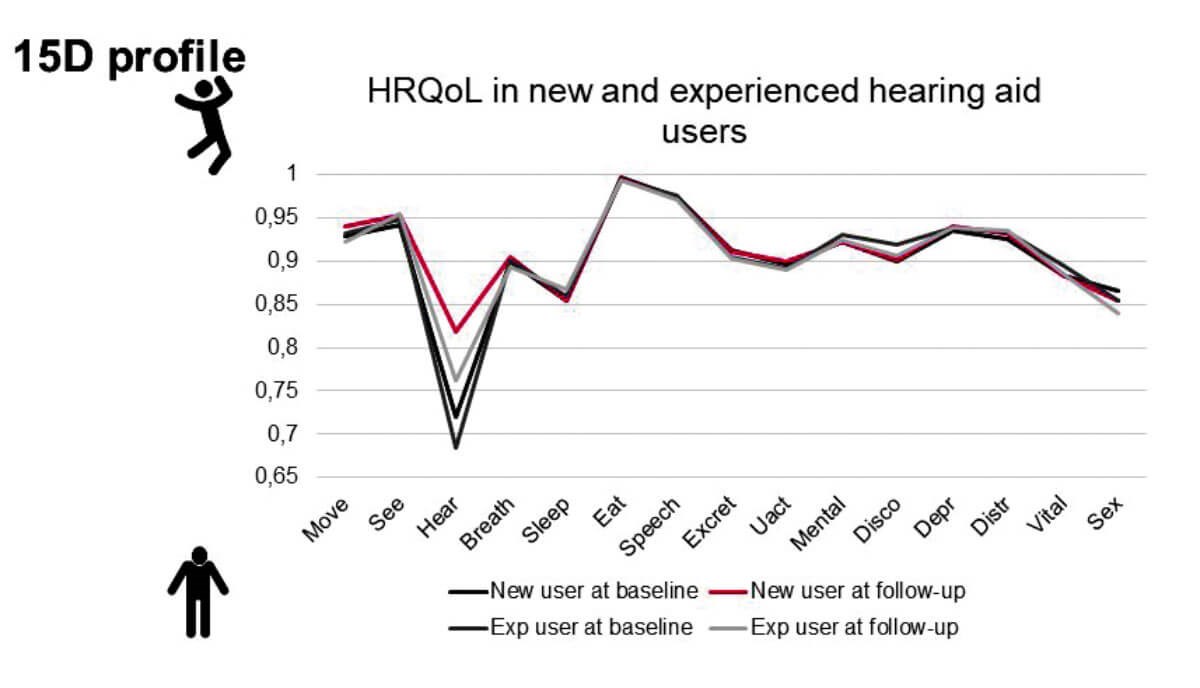
Data for almost 2000 patients collected 2017-2018 suggests that both new and experienced hearing aid users experience improvements in hearing after fitting of hearing aids. (Data earlier presented by Wolff et al. at ARO 2019) [4].
From a research point of view, we have options to get new knowledge which, in turn, enables us to propose new procedures, instrumentation, fitting paradigms and more. The effort we make has the potential to make a difference – beyond that of writing journal articles, defending theses, etc. The academic environments (in Denmark, and probably elsewhere) programme expectations for research production, publications etc., which will jeopardise research integrity if we do not insist on the definition of projects that have the potential to make a real difference. I was mentored to think this way, and I believe that it does make a difference.
To have female leadership of such a project may make more room for innovation, because the long-standing accepted ‘standard’ practices may be revised and refreshed. I have worked in a male-dominated department for almost 30 years, and I have noticed how small changes often open the door to new possibilities, and how being the ‘odd one out’ can sometimes define a space that would otherwise be difficult to make by design.
References
1. Dweck CS, Yeager DS. Mindsets: A View from Two Ears. Perspectives on Psychological Science 2019;14(3):481-96.
2. Sanchez Lopez R, Bianchi F, Fereczkowski M, et al. Data-Driven Approach for Auditory Profiling and Characterisation of Individual Hearing Loss. Trends in Hearing 2019;22:1-12.
3. Lund K, Ordoñez R, Nielsen JB, Hammershøi D. Sentence-based experience-logging in new hearing aid users. Conference on Internet and Audiology, Southampton, UK, 17-19 June 2019.
http://internetaudiology.com/
2019/files/IA2019_booklet.pdf
Last accessed July 2019.
4. Wolff A, Houmøller SS, Loquet G, Schmidt JH, Narne V, Gaihede M, Hougaard DD, Hammershøi D: The Better Hearing Rehabilitation (BEAR) Study in Denmark. Study Population Characteristics and Perspectives 42nd Annual midwinter meeting in the Association for Research in Otolaryngology (Book of Abstracts), 42 (PD 163), 2019.



